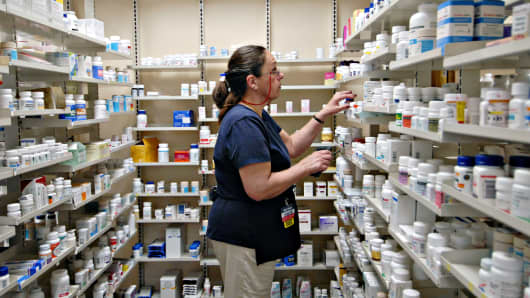Americans continue to suffer the highest prescription drug costs of anyone in the world. One in four are unable to fill prescriptions due to high prices, according to a recent poll. And even though drug prices tripled over the last decade, analysts predict they will double again in the next ten years.
We have a runaway problem on our hands, and while new proposals from Congress and the president seek to improve the drug pricing system, we will fail to reach lasting solutions unless we address a root factor in this national crisis: patents.
Contrary to the Trump administration’s recent claims, the source of our prescription drug problems is not “foreign freeloading” governments creating unfair pricing schemes—it’s the unfair pricing systems created right here in the U.S. Today’s drug patent monopolies are deeper, longer and stronger than at any point in the last century—and it’s costing Americans and people around the world.
Before a prescription drug even enters the market—before pricing negotiations occur between payers, government agencies, insurers, and so on—the U.S. patent office awards exclusivity to drug makers for intellectual property claims that have a huge impact on the market.
And unfortunately, while patenting is an important mechanism for incentivizing and rewarding invention, pharmaceutical companies have figured out how to game the system—prolonging monopolies, claiming newness where there often is none, and taking patients on a ride they can barely afford.
In a recent study of every drug on the market between 2005 and 2015, a University of California School of Law professor found a “startling departure from the classic conceptualization of intellectual property protection for pharmaceuticals.”
'Evergreening'
Instead of going to new medicines, the study finds that 74 percent of new patents during the decade went to drugs that already existed. It found that 80 percent of the nearly 100 best-selling drugs extended their exclusivity protections at least once, and 50 percent extended their patents more than once—with the effect of prolonging the time before generics could reach the market as drug prices continued to rise.
The strategy is called “evergreening”: drug makers add on new patents to prolong a drug’s exclusivity, even when the additions aren’t fundamentally new, non-obvious, and useful as the law requires.
One of the most expensive cancer drugs on the market, Revlimid®, is a case in point: priced at over $125,000 per year of treatment, Celgene has sought 105 patents on Revlimid®, many of which have been granted, extending its monopoly until the end of 2036. That gives the Revlimid® patent portfolio a lifespan of 40 years, which is being used to block or deter generic competitors from entering the market.
But a recent I-MAK analysis finds that several of Celgene’s patents are mere add-ons—not fundamentally new to deserve a patent. And because of the thicket of patents around Revlimid®, payers are projected to spend $45 billion in excess costs on that drug alone as compared to what they could be paying if generic competitors were to enter when the first patent expires in 2019. Meanwhile, Celgene is also among the pharmaceuticals that have been recently scolded by the FDA for refusing to share samples with generic makers so they can test their own products against the brands in order to attain FDA approval.
In the absence of genuine competition in the U.S. prescription drug market, monopolies are yielding reckless pricing schemes and prohibitively expensive drugs for Americans (and people around the world) who need them. In 2015, for example, U.S. Senators Wyden and Grassley found after an 18-month bipartisan investigation that the notorious $84,000 price tag for the hepatitis C drug made by Gilead was based on “a pricing and marketing strategy designed to maximize revenue with little concern for access or affordability.”
Gilead’s subsequent hepatitis C drug Harvoni® was introduced to the market at a still higher cost of $94,500. Who benefits when drugs are priced so high? Not the 85 percent of Americans with hepatitis C who are still not able to afford treatment.
Few affordable solutions
“Since the early 2000s, very few new drugs or indications have provided a tangible advance for patients,” the French medical journal Prescrire wrote in 2014. This is the problem with drug pricing today. Plenty of top-dollar drugs armored in patents, but too few solutions for patients that are genuinely affordable and helpful.
Until our patent system is reformed, the pharmaceutical industry will continue to abuse it—denying real competition, blocking incentives for actual new drug discoveries and using clever marketing strategies around “new” products that do not improve health outcomes.
For a free and competitive market that will actually help America’s patients, what we really need is to restore fairness to the patent system in the U.S. It may be convenient to blame foreign countries or insurance companies or any number of culprits for our high drug prices, but until we look at the heart of the problem and stop deflecting, patients in the U.S. and around the world will continue to lack treatments they can access and afford.
Tahir Amin is the co-founder and co-executive director of I-MAK.org, a non-profit organization comprised of senior attorneys, scientists and health experts who have worked to lower drug prices for 15 years. Follow him on Twitter @IMAKGlobal .


